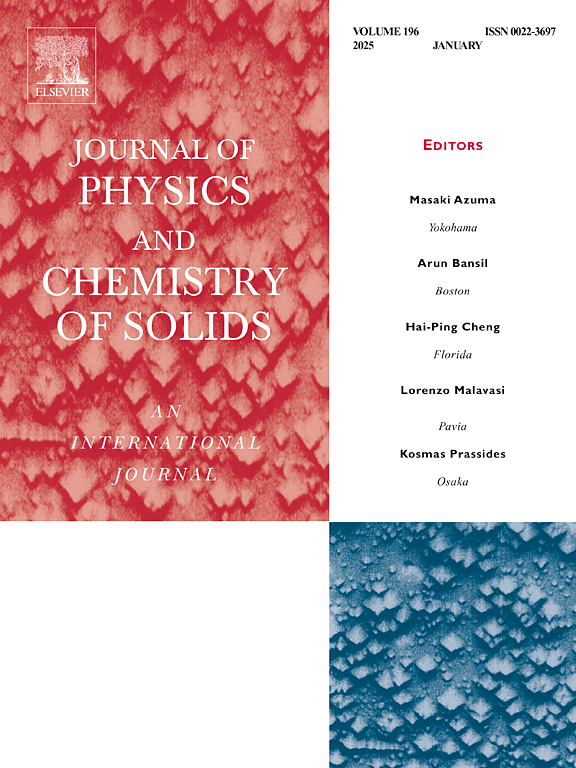Enhancing resistive switching behavior in double perovskites through doping and silver vacancies: A first-principles analysis
IF 4.3
3区 材料科学
Q2 CHEMISTRY, MULTIDISCIPLINARY
引用次数: 0
Abstract
Double perovskites with formula A2BB’X6 offer a broad range of compositions, making them promising for discovering new materials with unique properties, especially for Resistive Random-Access Memory (RRAM) applications. A detailed study of the physical properties of Rb2XAgCl6 (X = Sc, Y, In, Ga) double perovskites is performed using PBE-GGA and HSE-06 approximations. To understand the resistive switching mechanisms, the role of doping and VAg in these materials is explored by analyzing their electronic properties, including band structure and total density of states. The pristine materials originally had wide band gaps of 3.59 eV and 3.28 eV. Upon substituting Sc and Y with In and Ga using PBE-GGA, these were significantly reduced to 0.96 eV and 0.97 eV, respectively. However, with HSE-06 calculations, the band gaps improved to 3.50 eV and 3.92 eV for Sc and Y materials and 1.49 eV and 1.01 eV for the In and Ga, indicating a notable enhancement in band gap values compared to PBE-GGA. Introducing VAg (vacancy of silver) into doped structure further decrease the band gaps to zero, indicating metallic conductivity suitable for resistive switching. The elastic properties confirmed structural stability, even after doping and vacancy creation, maintaining mechanical integrity essential for device durability. Moreover, their optical properties show their potential to absorb significant electromagnetic radiation, enhancing their suitability for advanced memory technologies. The combined properties of these composites demonstrate their suitability for next-generation RRAM devices.
求助全文
约1分钟内获得全文
求助全文
来源期刊
CiteScore
7.80
自引率
2.50%
发文量
605
审稿时长
40 days
期刊介绍:
The Journal of Physics and Chemistry of Solids is a well-established international medium for publication of archival research in condensed matter and materials sciences. Areas of interest broadly include experimental and theoretical research on electronic, magnetic, spectroscopic and structural properties as well as the statistical mechanics and thermodynamics of materials. The focus is on gaining physical and chemical insight into the properties and potential applications of condensed matter systems.
Within the broad scope of the journal, beyond regular contributions, the editors have identified submissions in the following areas of physics and chemistry of solids to be of special current interest to the journal:
Low-dimensional systems
Exotic states of quantum electron matter including topological phases
Energy conversion and storage
Interfaces, nanoparticles and catalysts.

 求助内容:
求助内容: 应助结果提醒方式:
应助结果提醒方式:


